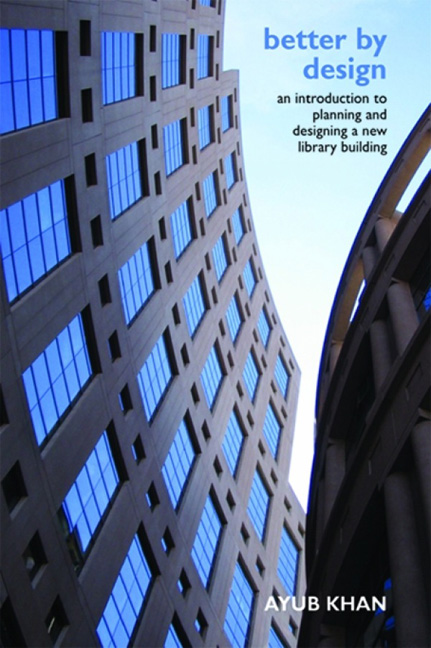Book contents
- Frontmatter
- Dedication
- Contents
- Lists of figures and tables
- Preface
- Acknowledgements
- Abbreviations and technical terms
- 1 Introduction
- 2 21st-century libraries
- 3 Developing a business case
- 4 Project management
- 5 The design/project team
- 6 Selecting an architect
- 7 Partnership and community engagement
- 8 The design brief
- 9 Design quality
- 10 Space planning and access
- 11 Occupancy and post-occupancy evaluation
- 12 Building libraries for the future – a summary
- Bibliography and further reading
- Appendices
- Index
- Miscellaneous Endmatter
- Miscellaneous Endmatter
- Miscellaneous Endmatter
- Miscellaneous Endmatter
11 - Occupancy and post-occupancy evaluation
Published online by Cambridge University Press: 08 June 2018
- Frontmatter
- Dedication
- Contents
- Lists of figures and tables
- Preface
- Acknowledgements
- Abbreviations and technical terms
- 1 Introduction
- 2 21st-century libraries
- 3 Developing a business case
- 4 Project management
- 5 The design/project team
- 6 Selecting an architect
- 7 Partnership and community engagement
- 8 The design brief
- 9 Design quality
- 10 Space planning and access
- 11 Occupancy and post-occupancy evaluation
- 12 Building libraries for the future – a summary
- Bibliography and further reading
- Appendices
- Index
- Miscellaneous Endmatter
- Miscellaneous Endmatter
- Miscellaneous Endmatter
- Miscellaneous Endmatter
Summary
Building occupancy is an area of planning that is often forgotten. Once the building phase is over, there is other work to be done. There needs to be careful preparation and planning for ‘the move’. There also needs to be an evaluation process. This chapter briefly explores these.
Undoubtedly there is still a role for the information professional in a physical space. The adaptability of that space will be increasingly important.
(Angela Dove (Dove, 2004, 24))The first year in a new building can be almost as stressful as the time leading up to the move. No new building is free from flaws, and there will be a number of construction mistakes to deal with. Also, only when the building is functioning will staff find out how people really use it, and the best laid plans can be thwarted by the flow of the new building dynamics. So this must be built into the planning and budget process.
Handover
This is a formal procedure in which the building is explained to the client who then takes on full ownership and responsibility for its management.
Moving in
The move itself needs to be planned – possibly phased – and staff need to be given an opportunity to familiarize themselves with the building and the equipment.
The first few months in a new building are by far the most testing. All kinds of unexpected problems can occur. This is normal and the librarian and others involved should not be too hard on themselves.
Even if construction has been uneventful and the building is on schedule, it might be advisable to delay moving in valuable material or archival collections, so the environment can settle.
When the building is handed over to the client, many systems need to be tested in normal use, such as lifts, lights, security systems, heating, plumbing and drainage. As equipment starts to be used, the system needs balancing until everything works as planned. This is quite usual in the early days. Although many systems will need to be tested and fine-tuned, some, like heating and ventilation systems, may need a full cycle of use over a whole year in order to be fully tested.
- Type
- Chapter
- Information
- Better by Designan introduction to planning and designing a new library building, pp. 137 - 142Publisher: FacetPrint publication year: 2008



